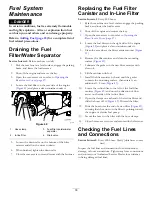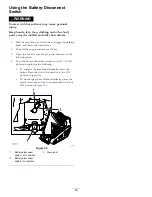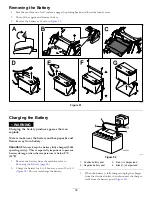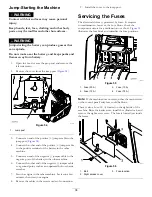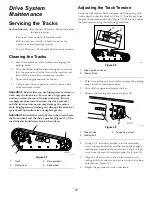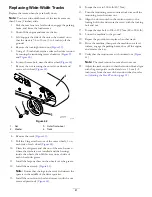
7.
Place a large drain pain capable of holding 57 L (15
US gallons) under the drain plug on the front of the
machine (
).
g031213
Figure 68
1.
Drain plug
8.
Remove the drain plug and allow the oil to drain into
the pan (
).
9.
When the oil is finished draining, install and tighten
the drain plug.
Note:
Dispose of the used oil at a certified recycling
center.
10.
Fill the hydraulic tank with approximately 38 L (10 US
gallons) of hydraulic fluid as specified previously.
11.
Start the engine and let it run for a few minutes.
12.
Shut off the engine.
13.
Check the hydraulic-fluid level and add fluid to fill the
tank if necessary; refer to
.
14.
Close the hood.
Checking the Hydraulic
Lines
Service Interval:
Every 100 hours—Check the hydraulic
lines for leaks, loose fittings, kinked lines,
loose mounting supports, wear, weather,
and chemical deterioration. (Make
necessary repairs before operating.)
Every 1,500 hours/Every 2 years (whichever comes
first)—Replace all moving hydraulic hoses.
WARNING
Hydraulic fluid escaping under pressure can
penetrate skin and cause injury. Fluid injected into
the skin must be surgically removed within a few
hours by a doctor familiar with this form of injury;
otherwise, gangrene may result.
•
Keep your body and hands away from pinhole
leaks or nozzles that eject high-pressure
hydraulic fluid.
•
Use cardboard or paper to find hydraulic leaks;
never use your hands.
47
Summary of Contents for 22327
Page 54: ...Schematics g205307 Electrical Schematic Rev B 54...
Page 55: ...g206362 Hydraulic Schematic Rev B 55...
Page 56: ...Notes...
Page 57: ...Notes...
Page 58: ...Notes...

